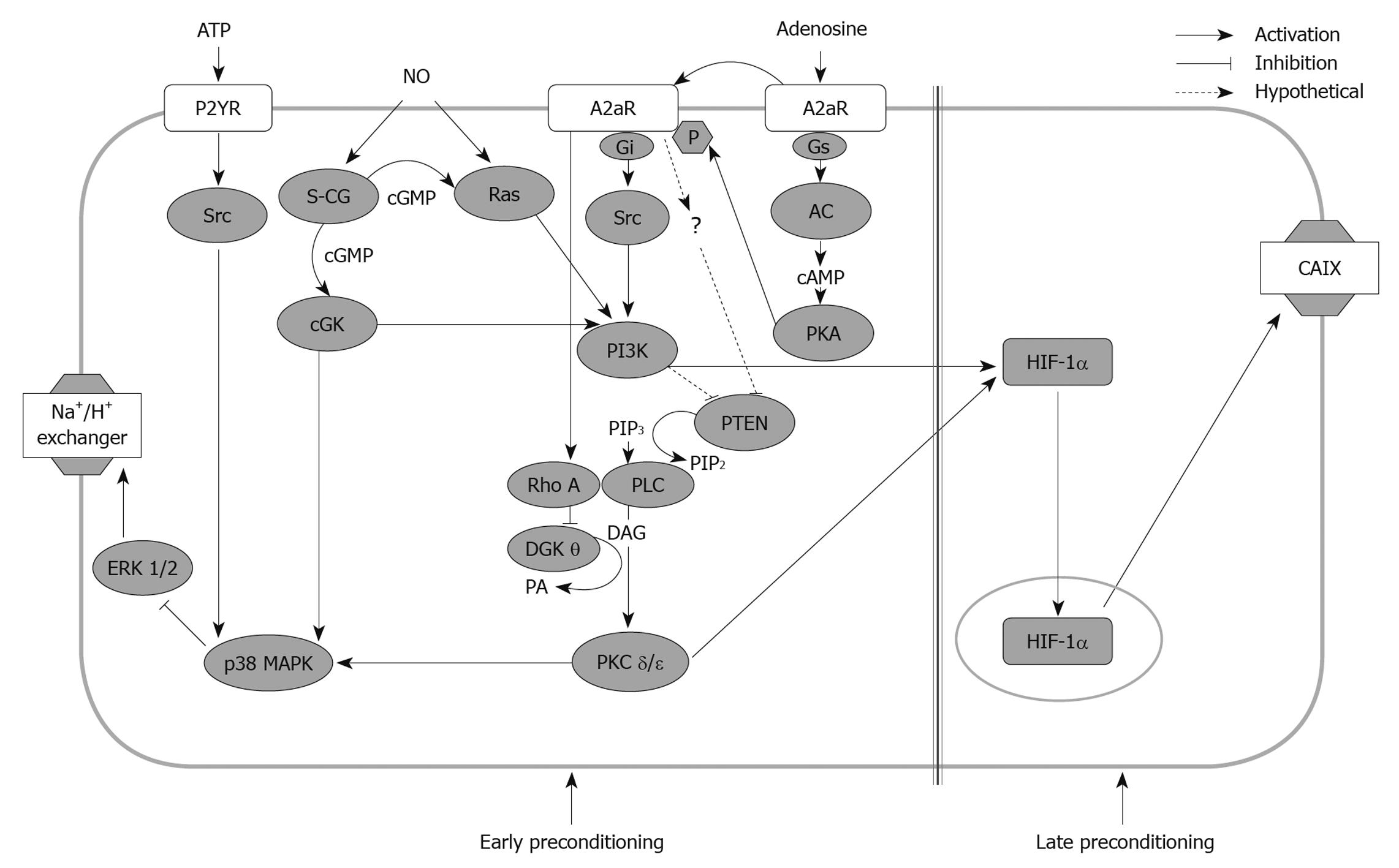Copyright
©2010 Baishideng Publishing Group Co.
World J Gastroenterol. Dec 28, 2010; 16(48): 6058-6067
Published online Dec 28, 2010. doi: 10.3748/wjg.v16.i48.6058
Published online Dec 28, 2010. doi: 10.3748/wjg.v16.i48.6058
Figure 1 Signalling pathways involved in the development of ischemic preconditioning in rat hepatocytes.
Adenosine triphosphate (ATP), adenosine and nitric oxide (NO) act as inductors of hepatocyte preconditioning by modulating a network of constitutive and newly synthesized signal mediators. Some of these mediators play a common central role in hepatocyte cytoprotection. p38 MAP kinase (p38 MAPK) is a mediator of the cytoprotective effects of all three preconditioning stimuli. Phosphatidylinositol 3-kinase (PI3K) mediates both adenosine and NO early resistance to hypoxia. PI3K together with protein kinase C (PKC) δ and ε, also induces hepatocyte late resistance to hypoxia contributing to the normoxic activation of hypoxia-inducible factor 1 (HIF-1). Diacylglycerol kinase theta (DGKθ) and the phosphatase tensin-homologues-deleted from chromosome 10 (PTEN) which metabolize diacyglycerol and phosphatidylinositol, respectively, are inhibited during preconditioning to sustain activation of the diacylglycerol (DAG)-dependent PKC δ and ε and the PI3K-dependent signals. See text and Refs[21,25,27,28,32,35,37,43]. P2YR: Purinergic P2Y receptors; A2aR: Adenosine 2A receptors; S-CG: Soluble guanylate cyclase; cGMP: Cyclic guanosine monophosphate; cGK: cGMP-dependent kinase; AC: Adenylate cyclase; cAMP: Cyclic adenosine monophosphate; PIP3: Phosphatidylinositol-3-phosphate; PKA: Protein kinase A; CAIX: Carbonic anhydrase IX; PLC: Phospholipase C; PA: Phosphatidic acid.
- Citation: Alchera E, Dal Ponte C, Imarisio C, Albano E, Carini R. Molecular mechanisms of liver preconditioning. World J Gastroenterol 2010; 16(48): 6058-6067
- URL: https://www.wjgnet.com/1007-9327/full/v16/i48/6058.htm
- DOI: https://dx.doi.org/10.3748/wjg.v16.i48.6058









